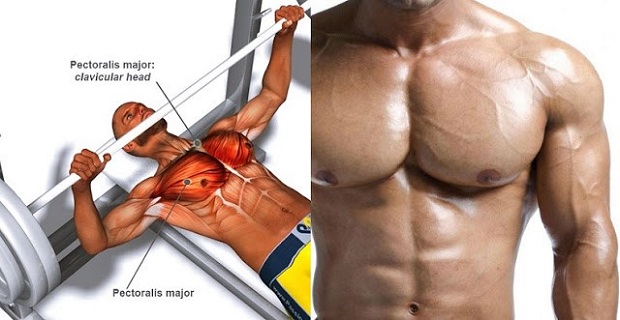The bench press is a tried and true exercise that has delivered results to men for generations past. The exercise works your pectoralis major and pectoralis minor or otherwise known as pecs. This muscle is the basically the big fanning muscles on your chest.It also works the front deltoids and the triceps but those a minor muscles compared to the pecs. When you perform this exercise as part of your workout routine, your chest is going to get bigger, but how do you perform the bench press properly to result in massive pecs that make women swoon? Incorporating the bench press done with proper technique into your workout will do the trick! Follow these guidelines to make your bench press a surefire way to achieve a big chest.
Proper placement on the bench
The most important thing about proper technique in bench press is how you place your arms and back. The shoulders should be retracted during the whole workout. How exactly do you retract the shoulders? First of all the back should be arched enough to be able to slip a hand in between the arch in your back and the bench. The chest should be up and the shoulders back. This gives the body more power and less stress on the rotator cuffs.
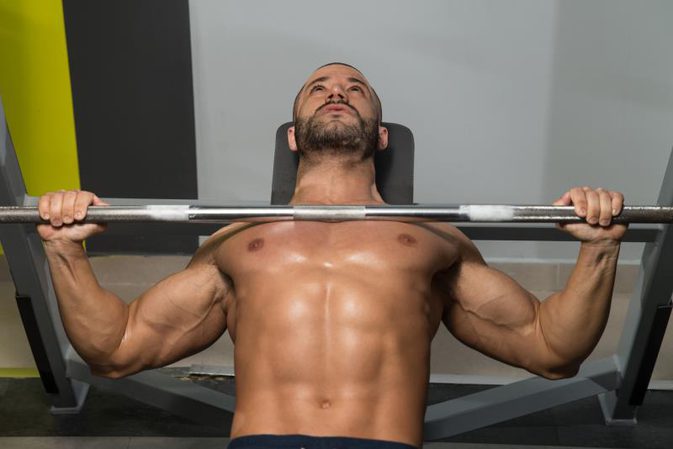
Bring the bar to the lower chest- Most men bench press to their chest. Since I’m telling you this little secret, you’ll be ahead of most men. By bringing the bar to the lower chest instead of straight up and down, you place more stress on the muscle and less stress on the joints, resulting in a happier, more amazingly buff man.
Steps to Performing a Bench Press With Proper Form
Step 1: Grab the bar at an equal distance on each side of the knurling. For most lifters, this is typically around shoulder width, or slightly greater than shoulder width, apart. Squeeze tightly to create tension in your hands, forearms, upper arms, shoulders, back and chest.
Step 2: Take a deep breath, driving your chest upwards and pulling your shoulder blades back and down into the bench.
Step 3: Plant your feet and drive them downward. Squeeze your glutes to tighten up your hips and lock them into place.
Step 4: Unrack the weight (with the help of a spotter) and move the bar directly over your chest without losing the tension in your upper back or allowing your chest to collapse.
Step 5: Reset your air by taking another big breath. Hold your breath and tighten up.
Step 6: With your entire body as tight as possible, row the weight downward under control until it reaches your chest. Ensure that your wrists and elbows stay in alignment. This will give you the best leverage and keep the weight centered.
Step 7: Without allowing your chest to collapse or losing any tension, coordinate your leg drive with driving the bar powerfully back to lockout.
Step 8: Reset your breath and repeat for the next repetition.
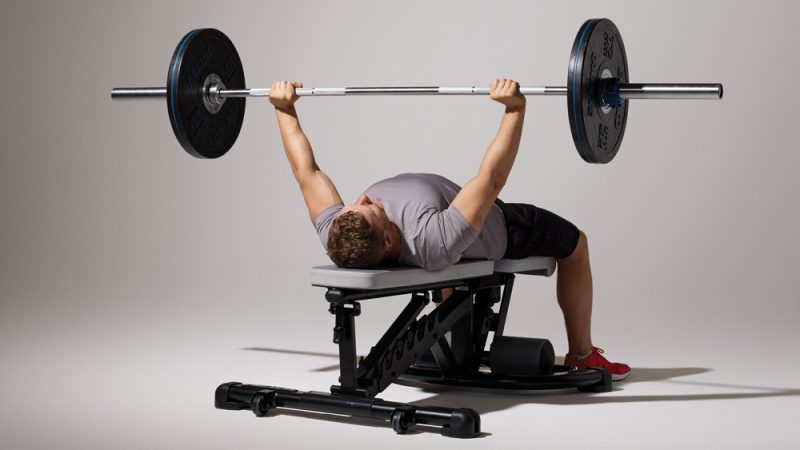
Things to Consider
Use a spotter whenever you can. Most folks in the gym have no problem spotting others as they are reciprocating an action that others do for them. Lifters are a tight family of sorts. Lifting the weight off the bar, and placing it back down, is very hard on the shoulders.
Play strict attention to the angle at which your arms go up and down to ensure that you are doing a proper bench press.
Ensure that your grip is as tight as possible. The harder you grip, the tighter your body becomes.
Drive your feet down as you lift the weight. I see too many people lift their feet off the ground when they lift the weight.
Use proper form over amount of weight. If you cannot bench it with proper form, you cannot bench it and you need to go lighter.
Bringing down the weight is more important than pushing it up. The rewards that you get from most exercises come from the negative force of the weight. Instead of dropping the weight down during a bench press, pull the weight down with your lats as if you were doing a cable row. You also want to simultaneously drive your chest upward toward the bar.
Push the weight up with as much force as possible.
As with most weight lifting exercises, it is important to warm up before going with the weight that you do your sets at. Take 10 minutes to properly warm up and you will save yourself a lot of pain and injury later.
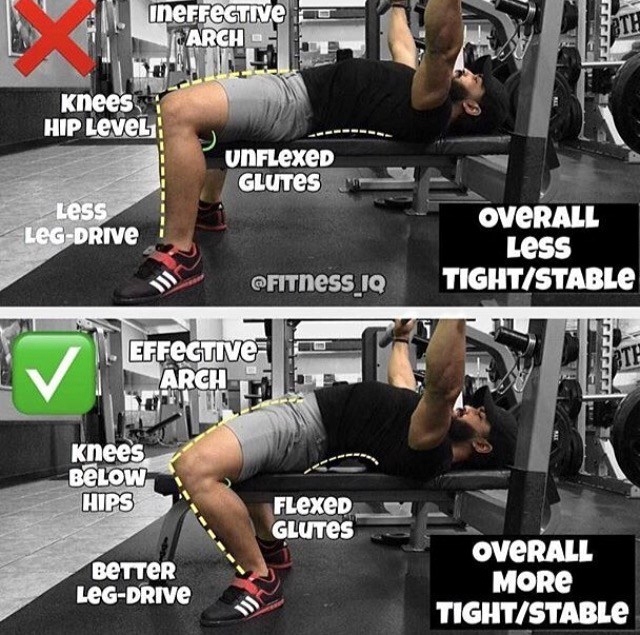
Feeling Pain When Performing Bench Presses
First and foremost, if you are feeling pain (outside of chest soreness) from bench pressing, stop immediately and see a doctor. They can tell you if something is wrong. Common places of pain and the shoulders and elbows. Tendinitis and tennis elbow can be common with weight lifters when they use heavy weights and bad form.
Once your doctor rules out a serious injury, you then need to take a look at your form. The most common issue people have is to not tuck their arms in when performing a bench press. This forces a lot of weight on your shoulders.
Bench Presses Do Not Work For Everyone
A lot of people do not perform bench presses for various reasons. Myself, I have shoulder issues that limit my bench pressing, but am constantly working on ways to improve that. If this is the case with you, try dumbbell bench presses as an alternative. During some of my cycles, I still to dumbbell bench presses strictly for a month or two.
Incorporate push-ups into your routine. There are so many variations of push-ups that are beneficial for growing a huge chest.
Also, some people just cannot do bench presses, which is fine. There are so many great chest exercises out there including using specialty bars, cable machines, bodyweight training and more.
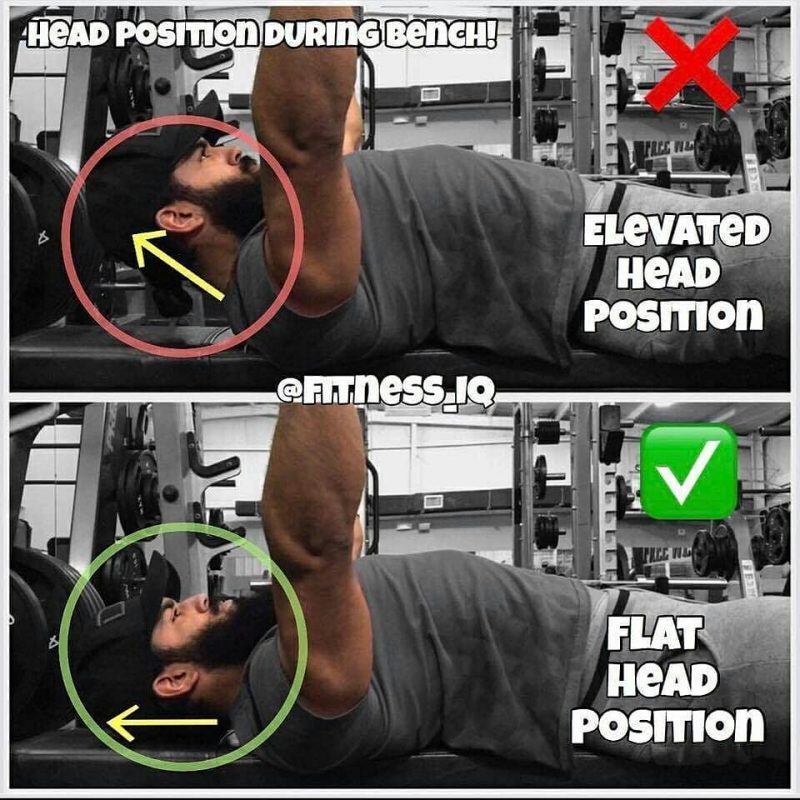
Use varying techniques
To develop all the muscles in the chest, it is important to do different types of bench press. There is the incline bench press, which is done with the bench in a 45 degree incline. This will work the upper chest. There is also a decline bench press. This is done with the bench at a decline. This works the lower chest muscles. Also, since the body gets used to certain movements, it is important to keep it guessing in order to get results. By switching from dumbbells to barbells and back again, your body will be in constant stress and grow bigger muscles.
Go slow
When performing the actual up and down movement of the bench press, it is important to keep it slow. Slow, maintained movement will keep the muscle engaged and in charge. This will be a crucial way to increase growth in your chest muscles.
Challenge yourself
Don’t be afraid to get a little crazy! If you have completed a session with relative ease, next week you should be upping the ante. Don’t underestimate your own strength. Have a little faith and challenge yourself. Your muscles will not change if you don’t make them. So go ahead, put another wheel on the bar!
Eat right
If you have been doing the bench press properly and still can’t get any results, maybe the problem is your fuel. When you tear the muscles through your workout, you need to provide your body with the right food to repair itself. The best way to do that is with a good nutritiously balanced diet with a heavy load of protein. Protein is the muscles best friend.
